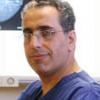Lumps in the breast caused by cysts are benign and relatively common. This article discusses the symptoms, diagnosis and treatment of breast cysts.
Contents
- What are breast cysts?
- What are the symptoms of breast cysts?
- Treatment for breast cysts
- Sources of further information
What are breast cysts?
Breast cysts are fluid-filled sacs and they are a relatively common cause of breast lump. Approximately 7% of all women will encounter a palpable cyst during their lifetime. Although these lumps are non-proliferative, they can vary considerably in size and result in much anxiety. Their presence can also affect the interpretation of clinical examination findings and mammograms. Cysts can be single or multiple, affect one breast or both breasts and change in response to hormonal fluctuations during the menstrual cycle.
What are the symptoms of breast cysts?
Most patients are alerted to a breast cyst by the appearance of a lump, however, tension within a cyst can be associated with significant pain. Following diagnostic confirmation with ultrasound scanning (Figure 1), symptomatic cysts can be treated with fine needle aspiration. The aspirated fluid is not routinely sent for further evaluation, unless it is blood stained or the cyst contains a solid component in which case it will not disappear after needle aspiration. The solid component of such cysts should be also subjected to ultrasound guided core biopsy in order to exclude rare cancerous cystic lesions.
Treatment for breast cysts
Small cysts do not usually require treatment. Cysts that are large or painful can be easily treated using a needle and syringe to remove the cyst fluid. Any lump that remains after this should be investigated with a biopsy and mammography. The fluid obtained from the cyst is usually discarded, unless it is blood-stained or there is a residual lump. Blood-stained fluid can sometimes be associated with breast cancer, especially if there is a residual lump. In such cases it will be sent for further tests.
Following the needle aspiration of a symptomatic simple cyst, the vast majority of patients can be reassured and discharged, with warning that recurrence is a possibility. Simple cysts do not become cancerous. A small proportion of women diagnosed with gross cystic breast disease (GCBD) have been suggested to be at increased risk of breast cancer, however, the evidence remains insufficient to warrant closer surveillance.
Although the management of most cases can be successfully undertaken by the GP, patients should be referred to a breast specialist for baseline evaluation and the formulation of an agreed management plan.









